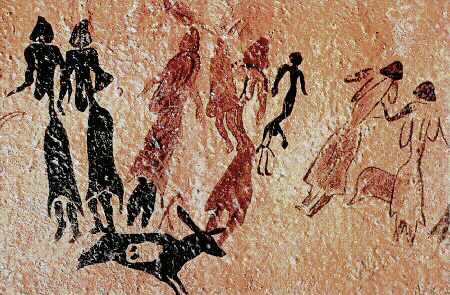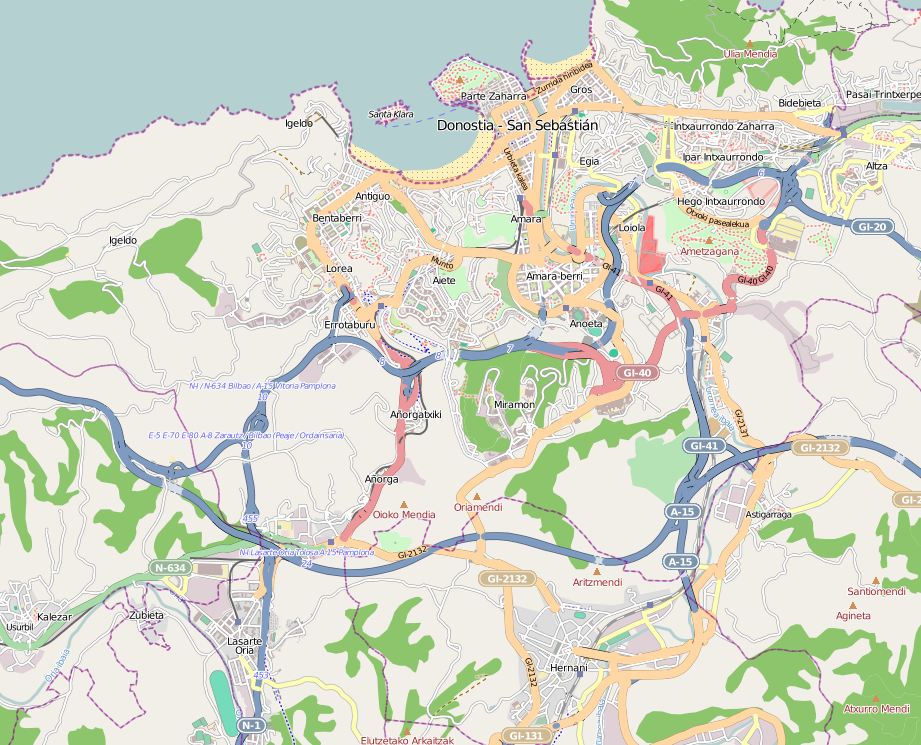|
Luis Pizano
Luis Pizaño (died 5/10/1550 Laredo-España-Spain) was a Spanish Captain General of Artillery and military engineer. He is best known for his work on the fortifications of Catalonia and the Basque Country. In 1540, he sent a report to the Council informing them that the fortifications of San Sebastián were in a poor state and should be extended. He took part in the reconstruction of the San Sebastian ''murallas'' between 1542 and 1544. Charles V let Pizaño assume responsibility for the construction of the Castell de la Trinitat and other building projects in Roses, Girona in 1543. Construction of the Castell de la Trinitat commenced on 2 January 1544 and was completed in mid-1551 after Pizaño's death by the Italian engineer Pietro di Giacomo Cataneo Pietro di Giacomo Cataneo (c. 1510 in Siena-c. 1574) was a 16th-century Italian architect. He is principally remembered for his ''I Quattro Primi Libri di Architettura'' (1554), a set of four books on architectural theory. In order, ... [...More Info...] [...Related Items...] OR: [Wikipedia] [Google] [Baidu] |
Catalonia
Catalonia (; ca, Catalunya ; Aranese Occitan: ''Catalonha'' ; es, Cataluña ) is an autonomous community of Spain, designated as a '' nationality'' by its Statute of Autonomy. Most of the territory (except the Val d'Aran) lies on the northeast of the Iberian Peninsula, to the south of the Pyrenees mountain range. Catalonia is administratively divided into four provinces: Barcelona, Girona, Lleida, and Tarragona. The capital and largest city, Barcelona is the second-most populated municipality in Spain and the fifth-most populous urban area in the European Union. > > > ''Catalonia'' theoretically derived. During the Middle Ages, Byzantine chroniclers claimed that ''Catalania'' derives from the local medley of Goths with Alans, initially constituting a ''Goth-Alania''. Other theories suggest: *''Catalunya'' derives from the term "land of castles", having evolved from the term ''castlà'' or ''castlan'', the medieval term for a castellan (a ruler of a castl ... [...More Info...] [...Related Items...] OR: [Wikipedia] [Google] [Baidu] |
Basque Country (greater Region)
The Basque Country ( eu, Euskal Herria; es, País Vasco; french: Pays basque) is the name given to the home of the Basque people. Trask, R.L. ''The History of Basque'' Routledge: 1997 The Basque country is located in the western Pyrenees, straddling the border between France and Spain on the coast of the Bay of Biscay. ''Euskal Herria'' is the oldest documented Basque name for the area they inhabit, dating from the 16th century. It comprises the Autonomous communities of Spain, Autonomous Communities of the Basque Country (autonomous community), Basque Country and Navarre in Spain and the Northern Basque Country in France. The region is home to the Basque people ( eu, Euskaldunak), their Basque language, language ( eu, Euskara), culture and traditions. The area is neither linguistically nor culturally homogeneous, and certain areas have a majority of people who do not consider themselves Basque, such as the south of Navarre. The concept is still highly controversial, and the ... [...More Info...] [...Related Items...] OR: [Wikipedia] [Google] [Baidu] |
San Sebastián
San Sebastian, officially known as Donostia–San Sebastián (names in both local languages: ''Donostia'' () and ''San Sebastián'' ()) is a city and municipality located in the Basque Autonomous Community, Spain. It lies on the coast of the Bay of Biscay, from the France–Spain border. The capital city of the province of Gipuzkoa, the municipality's population is 188,102 as of 2021, with its metropolitan area reaching 436,500 in 2010. Locals call themselves ''donostiarra'' (singular), both in Spanish and Basque. It is also a part of Basque Eurocity Bayonne-San Sebastián. The main economic activities are almost entirely service-based, with an emphasis on commerce and tourism, as it has long been one of the most famous tourist destinations in Spain. Despite the city's small size, events such as the San Sebastián International Film Festival and the San Sebastian Jazz Festival have given it an international dimension. San Sebastian, along with Wrocław, Poland, was th ... [...More Info...] [...Related Items...] OR: [Wikipedia] [Google] [Baidu] |
Castell De La Trinitat
Castell de la Trinitat is located on the Gulf of Roses, Alt Empordà comarca, Province of Girona, Catalonia, Spain. Along with the Ciutadella de Roses, it provided defenses for the town of Roses. The name comes from a chapel built in 1508, which was destroyed, along with a defense tower that stood in the area, when the castle was built, ordered by Emperor Charles V (Carlos I) in 1543. Work began on January 2, 1544 and the castle was completed in mid 1551 under the Spanish engineer Luis Pizano. In 1808, it was defended for twelve days by Royal Navy sailors and Royal Marines under the command of Captain Thomas, Lord Cochrane, supported by Catalan militia and regulars, and the damage inflicted by the besieging French and Italian artillery was compounded by an immense explosion of gunpowder barrels from Cochrane's frigate , laid by him to deny the investing French control of the sea approaches to the Bay of Rosas. It was built in the shape of a five-pointed star for defence purpose ... [...More Info...] [...Related Items...] OR: [Wikipedia] [Google] [Baidu] |
Roses, Girona
Roses (; es, Rosas, link=no, ) is a municipality in the ''comarca'' of the Alt Empordà, located on the Costa Brava, Catalonia, Spain. Roses is the site of the former bishopric of Rotdon, now a Latin Catholic titular see. It is situated on the coast at the northern end of the Gulf of Roses, and is an important fishing port and tourist centre. The C-260 road links the town with Figueres. The GR 92 long distance footpath, which roughly follows the length of the Mediterranean coast of Spain, has a staging point at Roses. Stage 3 links northwards to Cadaqués, a distance of , whilst stage 4 links southwards to the ''El Cortalet'' pond in the Parc Natural dels Aiguamolls de l'Empordà, a distance of . History Early history The origins of Roses are disputed. According to classical sources, it was founded in the 8th century BC by Greek colonists from Rhodes and was called Rhode ( grc, Ῥόδη). It seems more probable that it was founded in the 5th century BC by Greeks from M ... [...More Info...] [...Related Items...] OR: [Wikipedia] [Google] [Baidu] |
Pietro Di Giacomo Cataneo
Pietro di Giacomo Cataneo (c. 1510 in Siena-c. 1574) was a 16th-century Italian architect. He is principally remembered for his ''I Quattro Primi Libri di Architettura'' (1554), a set of four books on architectural theory. In order, the books cover the design of fortified cities, materials, ecclesiastical architecture and domestic architecture. His work on the design of cities was influential, having been cited by Andrea Palladio and elaborated on by Scamozzi and Vasari. His plan for an 'ideal city' is said to have influenced Richard Newcourt's proposal for the rebuilding of London after the Great Fire, as well as the design of cities such as Philadelphia and Savannah.Neil E. HoytRe-Humanizing the Commercial Core: A Masterplan for Chicago's Central Loop(Master's thesis: University of Notre Dame, 2005) The plan also bears a strong resemblance to the CBD of Adelaide Adelaide ( ) is the list of Australian capital cities, capital city of South Australia, the state's largest ... [...More Info...] [...Related Items...] OR: [Wikipedia] [Google] [Baidu] |
Spanish Military Engineers
Spanish might refer to: * Items from or related to Spain: **Spaniards are a nation and ethnic group indigenous to Spain ** Spanish language, spoken in Spain and many Latin American countries ** Spanish cuisine Other places * Spanish, Ontario, Canada * Spanish River (other), the name of several rivers * Spanish Town, Jamaica Other uses * John J. Spanish (1922–2019), American politician * "Spanish" (song), a single by Craig David, 2003 See also * * * Español (other) * Spain (other) * España (other) * Espanola (other) * Hispania, the Roman and Greek name for the Iberian Peninsula * Hispanic, the people, nations, and cultures that have a historical link to Spain * Hispanic (other) * Hispanism * Spain (other) * National and regional identity in Spain * Culture of Spain The culture of ''Spain'' is based on a variety of historical influences, primarily based on the culture of ancient Rome, Spain being a prom ... [...More Info...] [...Related Items...] OR: [Wikipedia] [Google] [Baidu] |
16th-century Spanish People
The 16th century begins with the Julian year 1501 ( MDI) and ends with either the Julian or the Gregorian year 1600 ( MDC) (depending on the reckoning used; the Gregorian calendar introduced a lapse of 10 days in October 1582). The 16th century is regarded by historians as the century which saw the rise of Western civilization and the Islamic gunpowder empires. The Renaissance in Italy and Europe saw the emergence of important artists, authors and scientists, and led to the foundation of important subjects which include accounting and political science. Copernicus proposed the heliocentric universe, which was met with strong resistance, and Tycho Brahe refuted the theory of celestial spheres through observational measurement of the 1572 appearance of a Milky Way supernova. These events directly challenged the long-held notion of an immutable universe supported by Ptolemy and Aristotle, and led to major revolutions in astronomy and science. Galileo Galilei became a champion ... [...More Info...] [...Related Items...] OR: [Wikipedia] [Google] [Baidu] |
16th-century Spanish Military Personnel
The 16th century begins with the Julian year 1501 ( MDI) and ends with either the Julian or the Gregorian year 1600 ( MDC) (depending on the reckoning used; the Gregorian calendar introduced a lapse of 10 days in October 1582). The 16th century is regarded by historians as the century which saw the rise of Western civilization and the Islamic gunpowder empires. The Renaissance in Italy and Europe saw the emergence of important artists, authors and scientists, and led to the foundation of important subjects which include accounting and political science. Copernicus proposed the heliocentric universe, which was met with strong resistance, and Tycho Brahe refuted the theory of celestial spheres through observational measurement of the 1572 appearance of a Milky Way supernova. These events directly challenged the long-held notion of an immutable universe supported by Ptolemy and Aristotle, and led to major revolutions in astronomy and science. Galileo Galilei became a champion o ... [...More Info...] [...Related Items...] OR: [Wikipedia] [Google] [Baidu] |






